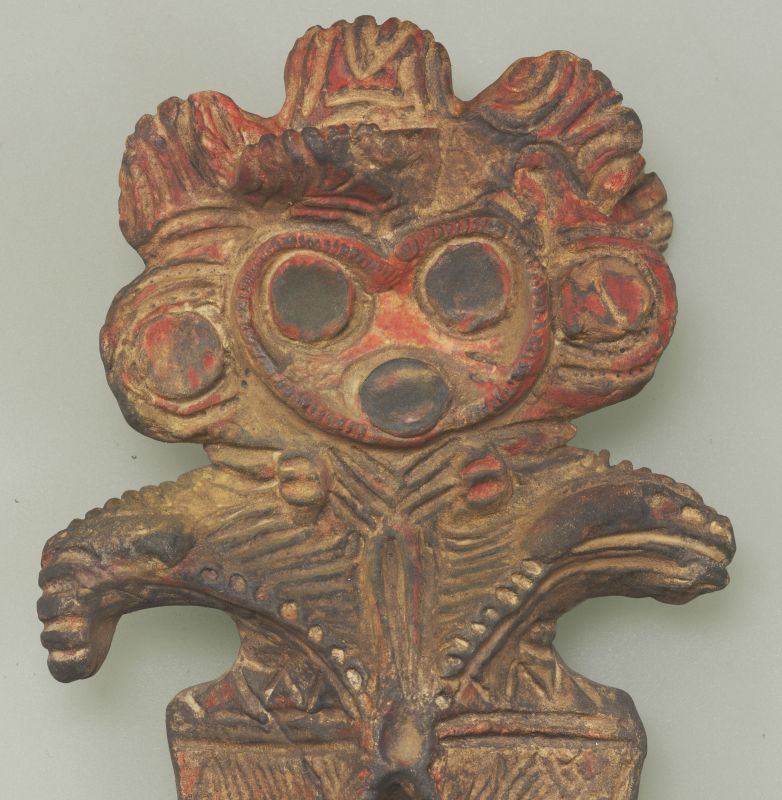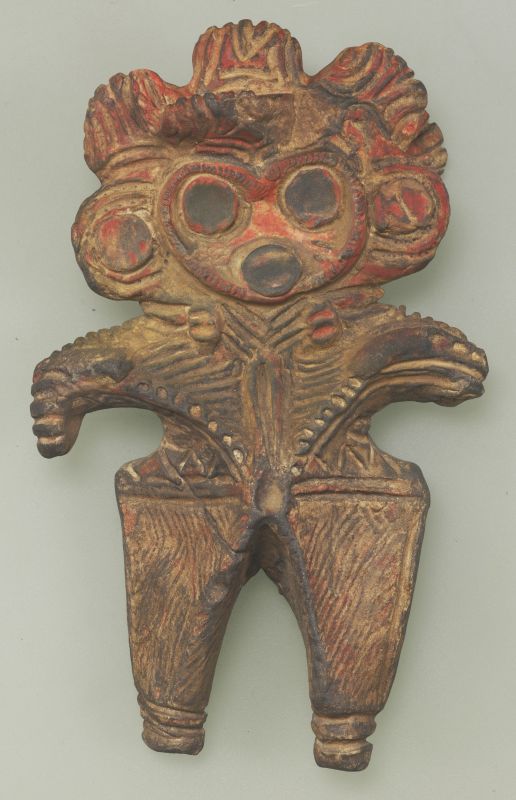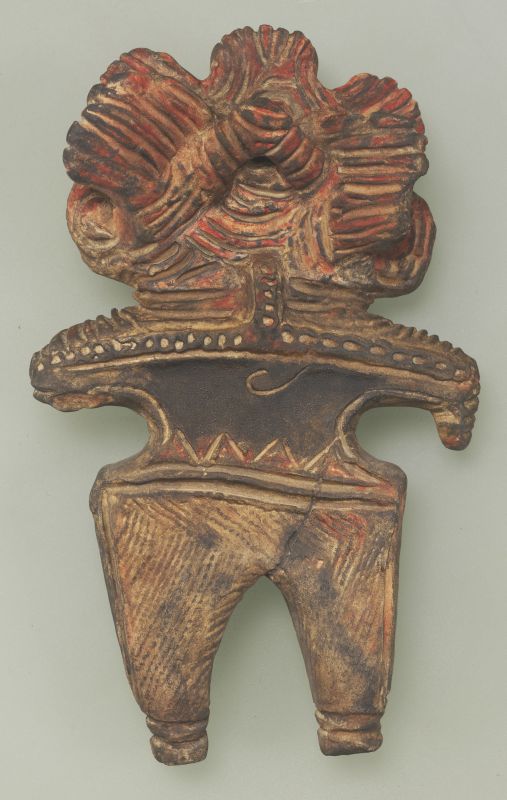Reproduction
| Title | Clay Figurine ([Dogū]) with an Owl-Like Face |
|---|---|
| Date | 2019 |
| Size | H20.5 cm W9.8cm D3.5cm |
| Production | TOPPAN PRINTING CO., LTD. |
Original Work
| Designation | Important Cultural Property |
|---|---|
| Artist/Excavation Site | Found at Shinpukuji Shell Mound, Saitama |
| Collection | Tokyo National Museum |
| Medium | Clay |
| Date | Jōmon period, 2,000–1,000 BC |
| Collection Ref. No. | J-39223 |
Overview
This dogū clay figurine was made during the Jōmon period, which lasted from around 11,000 BC to the 5th century BC. Dogū depict women and it is thought they were used to pray for a safe birth, the prosperity of one's descendants, or rich harvests. This dogū's large head and thin body prevent it from standing upright, so perhaps it was meant to be held in the hand or placed in something. The name of this dogū derives from its resemblance to a horned owl. The face is fringed by a heart, with the round eyes and mouth represented by thin pasted clay discs. The large protuberances on the head represent a comb and tied-up hair. There are also clay discs pasted onto the large ears. These portray oversized earrings inserted into holes in the ear lobes. Horned owl dogū proliferated in Japan's Tōhoku region from the latter half of the Late Jōmon period to the early half of the Final Jōmon period. A number of clay round earrings have also been found in this area. They come in a variety of sizes, some small and others up to 10 centimeters in diameter, but all were inserted into the ear, just like with this dōgu. In this way, dōgu figurines help us to envisage which fashions and hairstyles were popular back then.




